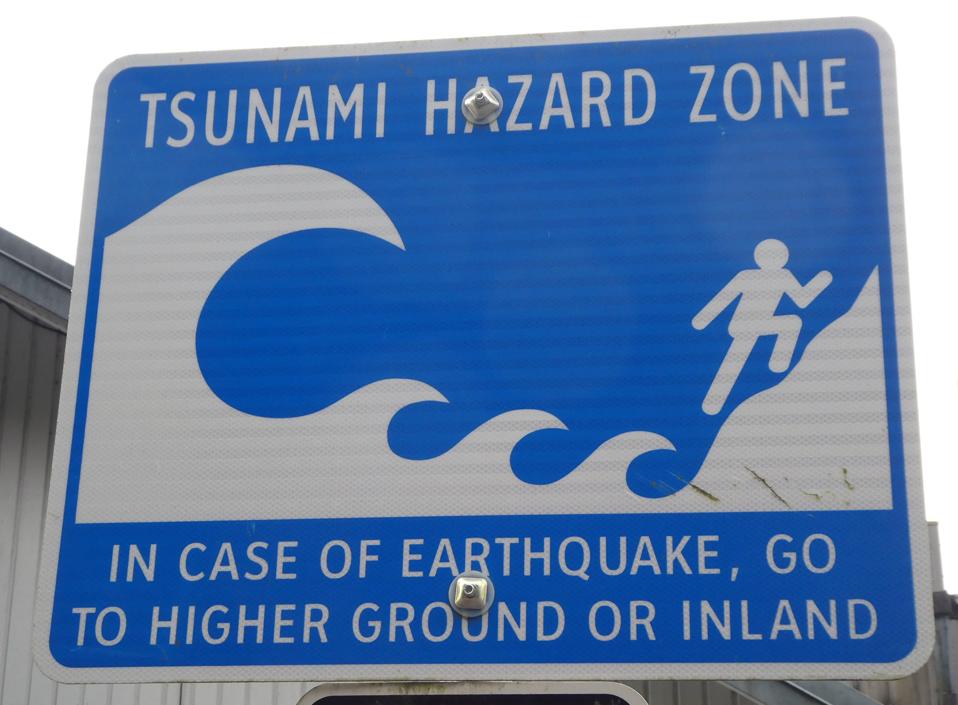The tsunami that was created today by the historic 8.8 earthquake in Russia-one of the most powerful one ever recorded—underscores important lessons and reminders for companies and organizations about preparing for and responding to natural disasters.
Tsunamis are one of the most destructive events triggered by Mother Nature, according to SMS-Tsunami-Warning, which draw data from seismic research centers. “Tsunami wave trains can move as fast as an airplane in high seas. These extremely powerful tidal waves are capable of crushing everything found in their path. The deadliest tsunamis have formed in response to powerful seaquakes, underwater explosions and volcanic eruptions,” its website explains.
“All tsunami-prone coastal areas in the U.S. have well-developed tsunami warning and response plans and local and state governments publicize these planning efforts, including regularly testing alert systems such as outdoor sirens and phone messaging,” Clifford Oliver, a former FEMA assistant administrator and now the principal at Nanticoke Global Strategies, explained in an email interview with me.
Despite all the steps that are taken by local, state, and federal governments to prepare for and warn people about potential tsunamis, companies must do their share as well. Businesses that are in areas that “are located in identified/mapped tsunami inundation area must have a plan in place to rapidly evacuate employees and others present at their facilities when a tsunami advisory, alert, or warning is issued,” he noted.
Degrees Of Preparation
But there are different degrees of being prepared for any crisis. “Too many organizations stop at a binder…and call it a plan. Real readiness is muscle memory—rehearsed, resourced, and rooted in cultural alignment. A crisis isn’t the time to find your playbook—it’s the time to prove you’ve rehearsed it. Tsunamis don’t just test infrastructure; they test leadership under pressure,” Patrice Williams-Lindo, CEO of Career Nomad, observed in an email message to me.
“This morning’s event illustrates that social media awareness, crisis mapping and AI-enhanced situational awareness is showing better and faster responses than we’ve seen historically in events such as the 2011 Tōhoku quake and Oklahoma quake in 2024,” Cheryl Conner, CEO of SnappConner PR, told me via email.
“But even better, we can learn lessons from increasing alignment among public and private resources such as community leaders and business owners to sudden crises. We became more adept at this during the Covid pandemic, but this morning’s situations such as Oprah Winfrey opening her private road in Hawaii to speed evacuation, are examples of what we can learn and do increasingly [bettter]
in the future,” Conner commented.
Early communication in disaster scenarios saves lives—but only when it’s timely, credible, and accurate, according to Michele Ehrhart, a crisis communications expert. “In this case, it was. Even though the impact was milder than expected, the response was solid. That’s not always true in places like the West Coast, where inconsistent early warning systems have led to public confusion and complacency,” she told me via an email message.
In 2020, the tsunami warning sirens that were turned on in the Southern California city of Huntington Beach turned out to be a false alarm.“There is no current threat to our community and we are working to determine exactly how/why the sirens were activated,” the Huntington Beach Fire Department tweeted,” the Associated Press reported.
Free Resources
There are several resources that companies and organizations can use to help prepare for nature-related crisis situations. As I reported in 2024, the Federal Emergency Management Agency announced the launch of its National Disaster & Emergency Management University. The university—which is open to the business community—will “help train emergency managers to keep pace with the rapidly changing threat environment,” according to a press release.
“Emergency managers are our nation’s chief problem solvers,” then-FEMA Administrator Deanne Criswell, said in a statement. The university “provides an opportunity for emergency managers to further their professional development and prepare to solve an expanding set of challenges in an ever-changing threat landscape. This is a groundbreaking moment that will be transformational for the field of emergency management.”
In 2021, FEMA announced the full application launch of the National Risk Index. The free resource “provides a clear, visual guide to natural hazard risks throughout the United States, and information to help communities to understand and reduce those risks, whether they involve flooding, wildfire, extreme heat, or drought,” according to the agency’s website.
The online mapping application identifies communities most at risk to 18 natural hazards, including coastal flooding, cold waves, hurricanes, ice storms and wildfires. The application visualizes natural hazard risk metrics and includes data about expected annual losses from natural hazards, social vulnerability and community resilience.
“Undertaking hazard mitigation measures, defined as a sustained action taken to reduce or eliminate the long-term risk before a crisis, reduces impacts and the corresponding need to prepare and respond,” Oliver, the former FEMA assistant director, pointed out.
“Implementing an on-going hazard mitigation program before, during, and after a crisis, serves to break the damage, repair, damage cycle,” he concluded.
According to SMS-Tsunami-Warning, the most destructive tsunamis ever recorded in modern times include:
- Sunda Strait, Indonesia 2018: Java and Sumatra, Indonesia
- Palu, Sulawesi, Indonesia 2018: Palu bay, Indonesia
- Sendai, Japan 2011: Japan and other countries
- Maule, Chile 2010: Chile and other countries
- Sumatra, Indonesia 2004: Indonesia, Thailand, Sri Lanka, Maldives and other countries
- Valdivia, Chile 1960: Chile, Hawaii, Japan, Philippines and other countries
The tsunami that was created by the 8.8 earthquake today in Russia underscores is the latest wake-up call for corporate executives that they should be fully prepared for the next natural disaster no matter what it is.

